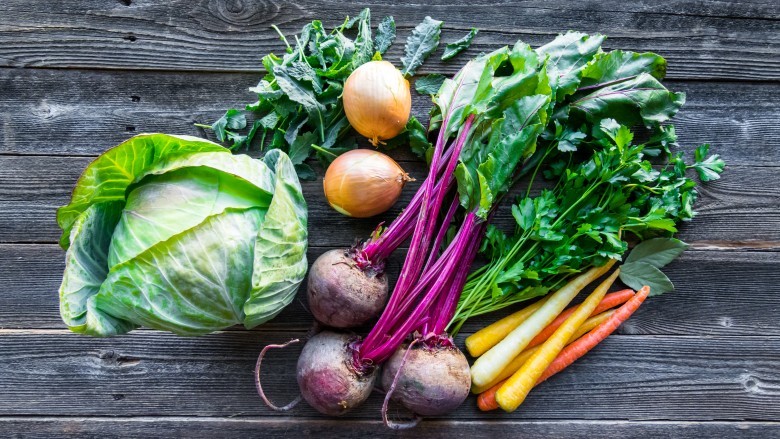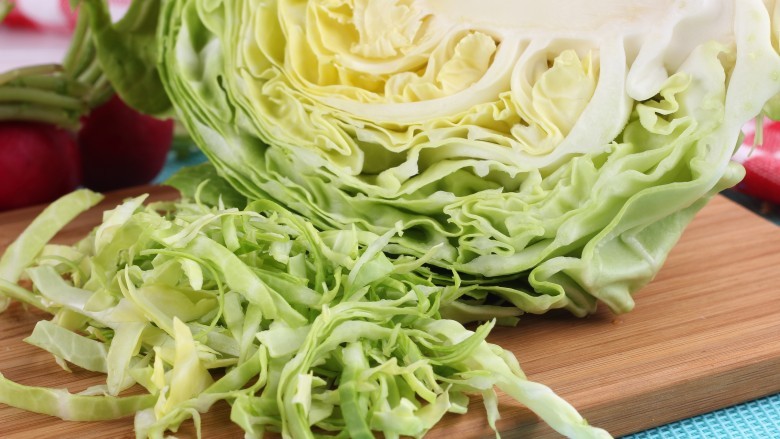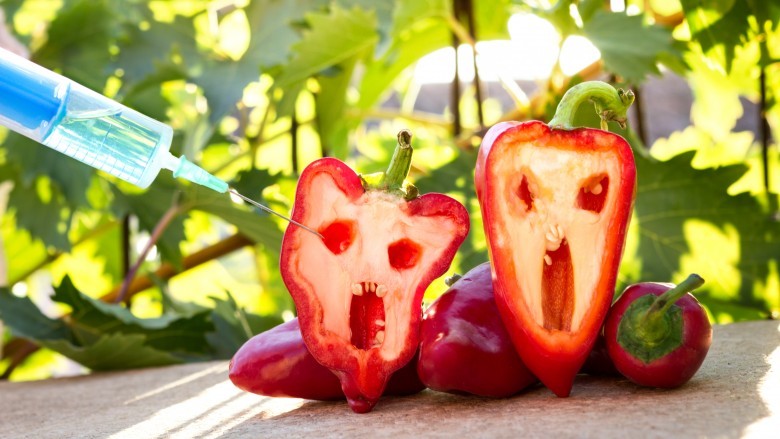Foods You Don't Need To Buy Organic
As much as we may want to eat organic 100 percent of the time, the reality is that's not always in the cards — or, more likely, not always possible with our given budget. By knowing which foods to definitely buy organic, we can better manage our grocery budget, but on the opposite side of the spectrum, which foods should we consider lowest on the organic priority list?
The Environmental Working Group refers to this group of foods as the "clean 15," or maybe better known to the rest of us as the produce that is safest to consume in a non-organic variety due to their low pesticide residue levels.
Avocado
Guacamole fans, celebrate! Whether spreading on a piece of toast, adding a big dollop to my taco salad, or scooping with my favorite tortilla chips, I eat a lot of avocados. Since they are full of healthy fats they are an absolute staple in my diet, but the price of buying avocados adds up pretty quickly, making it a celebration for them to be on this clean 15 list.
According to Honey Colony, "out of 15 fruit and vegetables, avocado samples returned with only one pesticide and the lowest percentage of occurrence — one percent of imiprothrin." Logically, this makes sense, given their thick and tough outer skin.
Sweet corn
Growing up, summers always meant being handed a bag of corn and the trash can and being sent outside to the porch to shuck the corn. I can't say I was ever very good at it, nor did I enjoy the activity, but I sure was happy knowing it meant we got some delicious sweet corn for dinner.
As it turns out, sweet corn is also on the EWG's clean 15 list, thanks to all the layers of husk that surrounds the kernels. While you could always buy sweet corn at the grocery store, I especially enjoy picking it up from my local farmer's market where I can find out how recently it was picked.
Pineapple
I have always been a huge pineapple fan. I can still remember the first time I ate fresh (not canned!) pineapple and wondered why my family had never purchased it before. My parents sliced it up and we ate the whole thing, leaving only outer and inner core as evidence.
That outer core provides the protection to the fruit that's needed so we don't have to buy organic. The only difference is that now when I buy a pineapple, I also eat the inner core for all of its additional health benefits. According to The Health Site, who spoke with a nutritionist, "The pineapple core is a rich source of fibre and keeps your digestive system healthy. Bromelain is a proteolytic enzyme with anticoagulant properties that helps clot blood. It also possesses anti-inflammatory properties and aids healing of wounds or bruises and other skin infections."
Cabbage
I have to admit that seeing cabbage on the list of the clean 15 surprised me a bit. While avocados and pineapple have a thick skin to protect the fruit, cabbage doesn't have that, but don't get me wrong, I am not complaining. Cabbage has quickly become one of my favorite produce items. There are so many ways to add cabbage into your diet, including sauerkraut (get the fresh stuff in the refrigerated aisle or make your own!), sautéed in coconut oil, in a salad, wilted into soup, or my favorite variety, coleslaw.
Onions
Onions are a pantry staple, seeing as they are useful for so many different recipes, so it's great knowing that we can save a little cash and skip the organic pile at the grocery store. As we all know, cutting into an unknown usually results in an onslaught of tears. For me, it gets so bad that I have tears running down my face as I chop!
According to Cooking Light, "When pierced, onions deploy a natural defense system that results in a harsh, sulfuric odor and pungent flavor. Insects tend to stay away, which means less of a need for pesticides." All that to say, those tears are happy tears.
Asparagus
Asparagus is another favorite veggie that made the clean 15 list, meaning we don't need to worry about buying organic. As tempting as it may be to buy all of the asparagus next time you're at the store, the smell of your urine post-asparagus may be reason to make sure you're still limiting quantities.
According to WebMD, "Researchers believe that, during digestion, the vegetable's sulfurous amino acids break down into smelly chemical components in all people. And because those components are 'volatile,' meaning airborne, the odor wafts upward as the urine leaves the body and can be detected as soon as 15 minutes after you eat this spring delicacy." Yummy!
Mango
When mango season hits, I celebrate. This sweet fruit is a favorite in my house and often leads to arguments over who gets to eat the extra mango off the pit after cutting it up. While they may be delicious and they fall onto this safe list, if you've never cut one before, they're a bit intimidating — but it doesn't have to be so difficult. Stand the mango upright, slice a bit off-center, and then repeat on the other side; you end up with two "cheeks" and the pit. Then you can score each cheek, making sure not to slice all the way through, and then flip inside out and scoop out the mango. They also make mango splitters, if that all sounds too complicated.
Kiwi
As much as I loved clean 15-approved kiwi, for years I thought it was such a waste. By the time I was able to cut or peel the skin off the fruit, I felt like I was either losing half the kiwi or had juice dripping down my arm and a half squished kiwi in my hand. I'm happy to tell you it doesn't have to be so hard; you can eat the skin!
In fact, according to California Kiwifruit, "a recent study shows that eating the skin triples the fiber intake compared to merely eating the flesh. And by not peeling the skin, you preserve much of the vitamin C content as well."
Eggplant
With its firm, thick skin, eggplant is the next veggie to make the cut on the clean 15. Eggplant is such a versatile little veggie, whether rolled up in a delicious skinny eggplant rollatini, sliced and used as the base for mini gluten-free pizzas, or used in a more classic recipe, eggplant parmesan.
Honeydew melon and cantaloupe
According to the Culture Cheat Sheet, "with 27 detectable pesticides, cantaloupe might be the 'dirtiest' on the clean 15. However, a relatively low percentage of the melons tested — especially compared to, say, peaches — actually had significant levels of pesticides. In fact, you're best off with domestic cantaloupe."
We have to do what we believe is best for our family, and while I would choose to buy organic when it's available, it's good to know we don't need to entirely skip the melon section when it's not.
Grapefruit
I always remember my grandfather sitting at the breakfast table with half a grapefruit in a bowl and a little bowl of sugar next to him. Across the table, I had a bowl of Golden Grahams or my grandmother's french toast. Either way, despite seeing him eat a grapefruit for years, it wasn't until my adult years when I finally tried this deliciously tart fruit.
If you've ever tried to peel a grapefruit, then you not only understand why my grandfather ate his with a spoon, but you likely also understand why this fruit makes the clean 15 list; it's peel is tough! With that said, it is recommended to buy organic if you're planning to zest the skin.
Cauliflower
Seemingly overnight, cauliflower became one of the most popular veggies in the supermarket. People use it for cauliflower rice, cauliflower pizza crust, roasted cauliflower "steaks," and so many more delicious ideas! With so many different recipes out there to try, rest assured you don't need to splurge for the organic variety.
Papaya
Another fruit with a thick skin that requires peeling in order to eat is the papaya. According to Cooking Light, "Of all of the papayas tested in the EWG's report, 20 percent carried pesticide residues. Keep in mind that most Hawaiian papayas are grown using GMOs, so opt for organic if that is a concern."
Frozen sweet peas
It is often assumed that frozen veggies contain less contamination due to their blanching prior to freezing, as is the case with frozen sweet peas. According to Honey Colony, "high in fiber, peas can prevent constipation, improving bowel health, and also regulate blood sugar levels. Rich in flavanoids, carotenoid, phenolic acids, and polyphenols, regularly eating sweet peas can provide anti-aging, immune boosting, and enhanced energy properties."
A word of caution
As happy as I am to save a bit of money on my groceries when needed by not buying all organic produce, it's important to note that just because the item is on the "clean 15" list, it doesn't mean the conventional is the best choice. As stated by Sustainable Baby Steps, "You'll notice that many of the cleanest fruits are tropical, which means they might not be local to you at all (meaning a big eco-footprint to get it to you in the first place), or may still be genetically modified and perhaps why it has such low pesticide residue (because the pesticides are actually in the genes of the plant now!)." This isn't meant to scare you, but keep it in mind the next time you head to the store; if you can afford organic then I recommend doing so, but if you need to save somewhere, these are the best foods to buy non-organic.















